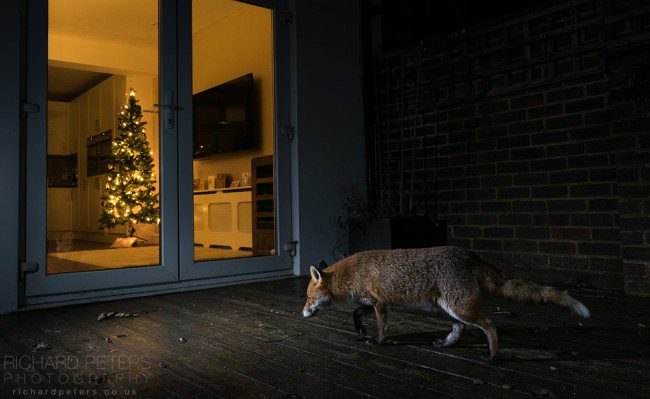Well that was fun. 2015 was most definitely a year to remember. It’s one that has seen me write my first ebook, talk at some great events, meet some lovely people, tear the cartilage in my knee to get the shot(!) and of course, capture a wildlife photo that didn’t actually have any wildlife in it – yet thankfully still managed to engage the imagination of others.
So yes, it’s certainly been an eventful time although, much like 2014’s year in review reflected, I still find myself very much shooting for me and my love of creativity and the animals we share our planet with, rather than to please others. Approaching photography this way helps me to remember why I first picked up a camera and keeps me thinking about the images I want to take, before I take them, rather than just taking countless images without consideration.
Making the most of the light
It was Greece’s Lake Kerkini and the Dalmatian Pelican that was the first shoot of the year, way back in January. An enjoyable weekend with a wonderful group of people, all eager to capture this sadly declining species on camera. It proved a good opportunity to work with different lighting and produce contrasting images. Hazy but bright conditions worked wonders to produce some lovely high-key style imagery, whilst another days dull and cloudy afternoon allowed for some really dramatic looking frames by way of underexposure and some off-camera flash. Photography is all about knowing how to make the most of the light, and when you can do that, almost any scenario has the potential to provide captivating images.
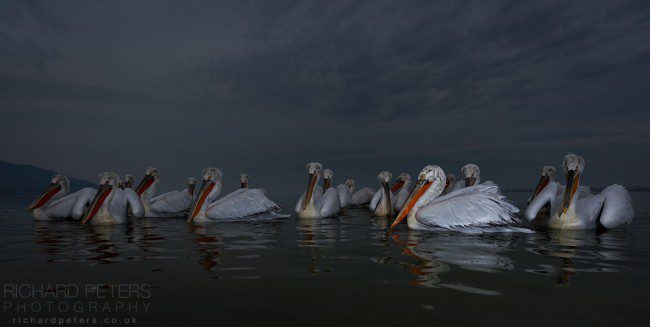
The water-level high-key images didn’t come without their price though. I threw myself down onto the floor to quickly get that low vantage, only to land awkwardly on my knee. I didn’t know it at the time, but the sharp pain I felt as I did so, was my cartilage tearing. Note to self, you’re not a spring chicken anymore.
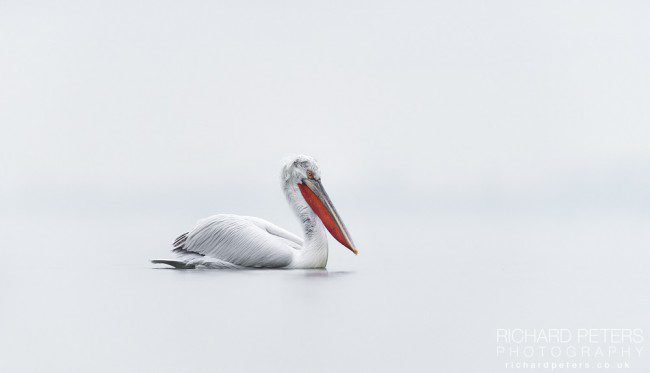
Keeping it simple
As I’ve referenced, I find myself shooting less but shooting smarter. And although there are times an image might require some technical challenges, I do love those that are simple in both their appearance and technicalities. For me that is summed up with my visit to Africa. There are few places on earth that seem to capture the photographic imagination quite like this wildlife paradise. For those that have been, you’ll know what I am referring too. It’s quite simply spectacular. Such is it’s power, that even those who have not had the opportunity to experience it first hand seem to be drawn towards imagery taken there. During my time in the Mara this year, we had a wonderful encounter with Morani, surely one of the most handsome lions of the Maasai Mara. Despite capturing many images on the trip, this simple portrait reminds me that it’s good to keep it simple.
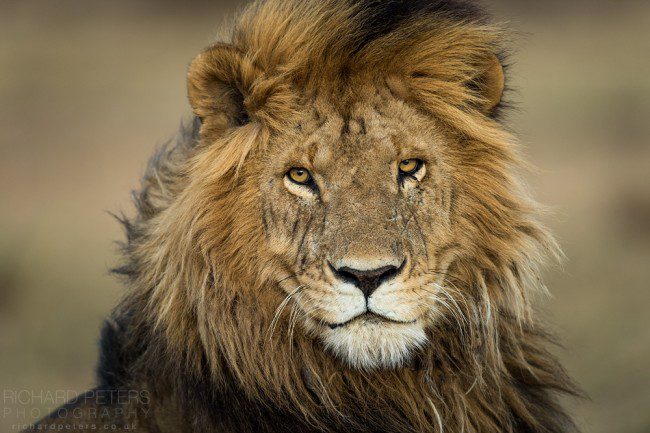
Another image I favourited from this trip came in the shape of several wildebeest silhouetted against a band of clear sky as the first light of the day slowly illuminated the day. Beautiful light and crips outlines always work well.
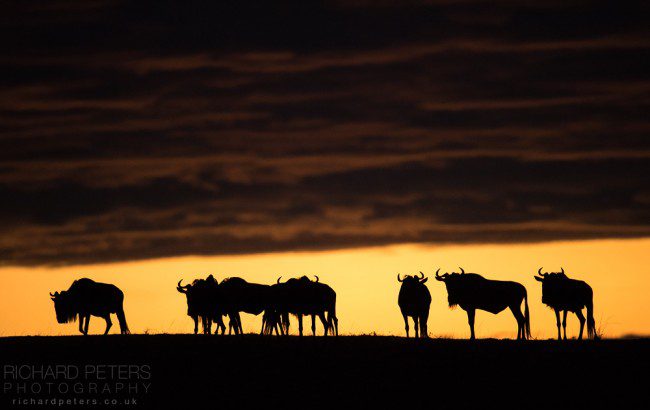
Thinking differently
A beautiful summers evening on Skomer Island, with a clear sky and some golden backlight provided me the opportunity to capture this puffin coming into land. Ordinarily the temptation with a puffin in flight would be to opt for a high shutter speed to freeze the motion of the wings. Instead of going that route, I opted for something a little different and spent over an hour taking around 300 images at 1/60th second, trying to emphasis the incredible light filtering trough the wings by way of some motion blur. A hugely frustrating exercise, no doubt about it. And of all the images I captured, this was the only one that was both sharp enough and showed the right amount of blur in those wings. It was very much down to the luck of the drawer and persistence. But that’s the beauty of Skomer Island, if you stay overnight, you get to make the very most of the first and last light of the day.
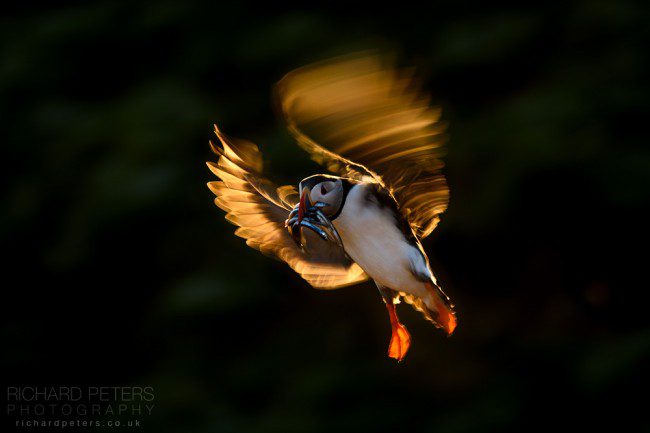
Travel is not essential
This year was the first complete year of working on a project close to home, in fact, at home. I’ve been lucky enough to discover I live close to an urban badger sett and as such, I’ve been trying to encourage not just bird life but also these wonderful mammals into the garden to observe and photograph. The project has served two purposes. The first, to show you do not have to travel to far flung exotic locations to capture images of wildlife and the second, to show that even the most unexpected wildlife could be right outside your door without you even knowing. In the UK, cities and towns are growing by the day and encroaching on wild habitats, so it’s vital we all do our bit to provide a welcoming environment for our wild neighbours.
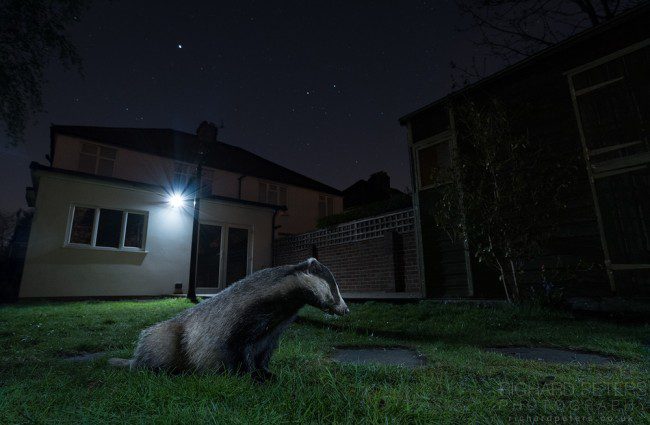
That project also spawned two unplanned events. The first was turning my project into my first ebook, Back Garden Safari, which documents the ups and downs of my journey, whilst also giving a plethora of technical tips and advice for photographers of all abilities.
Secondly, the project resulted in capturing the image Shadow Walker. Also fitting in with the idea of thinking differently, this photo depicts the urban fox in an entirely new way, with the subject not even in the frame. The idea being to represent the way these animals live in the shadows and share our urban landscape, often right under our noses, without many of us even aware of their presence. Needless to say, with the image taken just two week before both competitions closed for entry, I was cutting it fine! On top of that, with it being quite an unusual image I was speechless when it saw me going up on stage at both, winning the Urban category of the 2015 Wildlife Photographer of the Year but was also crowned the overall winner of the 2015 GDT European Wildlife Photographer of the Year. Again this wonderful outcome helping to highlight the idea that with a little thought, fresh photographic opportunities can be found right under our noses.
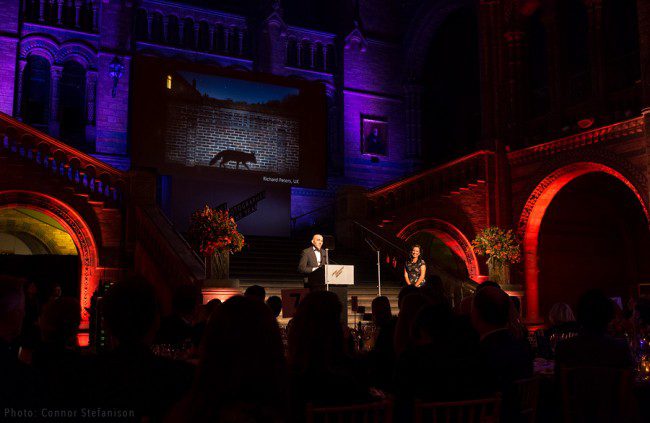
Other 2015 highlights
Earlier in the year, I found myself being asked to contribute an image to the Remembering Elephants campaign. Working in conjunction with the Born Free Foundation, the aim is to produce a book that highlights the plight of the elephant, illustrated with images from 50 of the worlds best Wildlife Photographers, so to be invited for inclusion was nothing short of a huge honour. To find out more about how you can get involved and pre-order the book, check out the Born Free Foundation website.
With just a couple of days to go before the year was over, a quite unexpected opportunity resulted in a day spent at the UK Wolf Conservation Trust with ecoventurer and naturalist, Catherine Capon. As part of a bigger project, Catherine was filming and documenting the wolves and work the WCT do. They work hard to educate others and also raise funds to support conversation projects in other parts of the world, so it was fascinating to learn more about how they do that, and spend some time up close with these majestic animals.
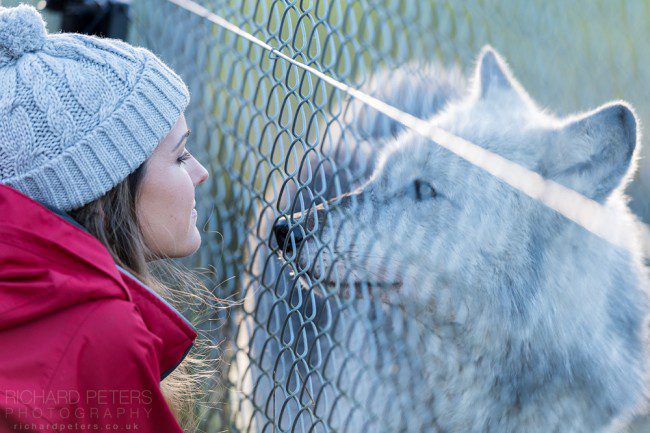
More details about the day will follow in due course, but in the meantime check out the UKWCT website.
Some sad news to come from 2015 was the death of one of the world’s most photographed foxes, Frodo. He lived a very content life at the British Wildlife Centre and was a firm favourite amongst the centre’s visitors. Thankfully it was old age that got the better of him, rather than the often untimely demise of his wild relatives. A sad day for the centre but Frodo will live on in the millions of images he has featured in over the years.
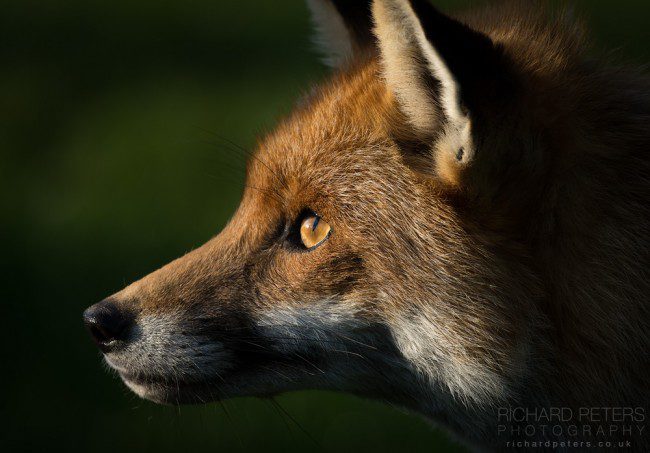
I met some lovely people at various talks this year, especially the ones I did on the Nikon stand at Birdfair, along with a much larger presentation at Amateur Photographers HQ in London as part of Nikon School Live. It’s always such a pleasure to meet people at these events, and put real faces to those who I have been interacting with online previously.
WHAT WILL 2016 BRING?
The year ahead is currently looking like more fun is on the way. Some highlights include co-hosting more trips, so if the dalmatian pelicans, Africa, Skomer or the British Wildlife Centre appeal, I’m heading back to all these destinations in the coming year. I can promise you lots of fun, laughter, wonderful photographic opportunities and more. Check out my workshops page for more information on each.
I’ll also be talking on the Nikon stand again, this time at the Photography Show held in Birmingham in March, so if you’re heading that way, please do stop by and say hello!
Finally, I’d just like to thank all of those who’ve I’ve worked with this year. It’s always a true pleasure to meet and chat to like-minded people about the passion we share for both photography and the natural world, be it in the field, on workshops or at events.
I hope you all had a wonderful holiday season, and wishing you a very Happy New Year!
